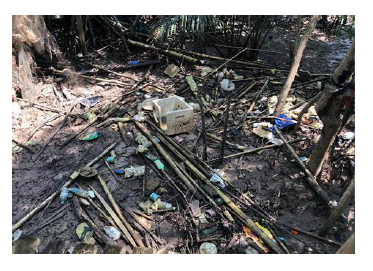Efficiency of Di-(2-Ethylhexyl) Phthalate Degrading Bacteria Isolated fom Mangrove Sediment and Landfill Soil
Keywords:
Di-(2-ethylhexyl) phthalate (DEHP), Biodegradation, DEHP-degrading bacteria, Mangrove sediment, Landfill soil, Plastic wasteAbstract
Phthalate esters (PAEs) are widely used as plasticizers to improve plasticity and flexibility of polymeric materials. Di-(2-ethylhexyl) phthalate (DEHP), one of the commonly used PAEs in plastic industries, has been ranked the top priority pollutants by the United States Environmental Protection Agency (USEPA). Biodegradation is considered a promising technology for DEHP removal. Consequently, the objectives of this study were to isolate efficient DEHP-degrading bacteria from contaminated mangrove sediment and landfill soil. The efficiencies of DEHP-degrading activities among the isolated bacteria were subsequently compared. The mangrove sediment and landfill soil samples were respectively collected from Samut Prakan and Rayong provinces, Thailand. Both locations have chronic exposure to plastic waste. In this study, five and seven DEHP-degrading bacterial isolates were obtained from mangrove sediment and landfill soil, respectively, by enrichment approach. For each isolate, the degradation efficiencies of 200 mg/l DEHP were monitored after 7 days. The DEHP degradation efficiencies of those retrieved from mangrove sediment (SPK) and landfill soil (RY) ranged from 71.34% to 96.70% and 9.19% to 30.65%, respectively. The results indicated that DEHP-degrading bacteria isolated from mangrove sediment were able to more efficiently degrade DEHP than those obtained from landfill soil. Mangrove sediment impacted by plastic pollution could provide a valuable source of efficient DEHP-degrading bacteria. Further study will focus on the development of DEHP-degrading bacterial consortium composing of a variety of bacterial characteristics, including the ability to degrade other PAEs. Bioremediation technology for plastic waste can be built upon initial findings gained from this study.

